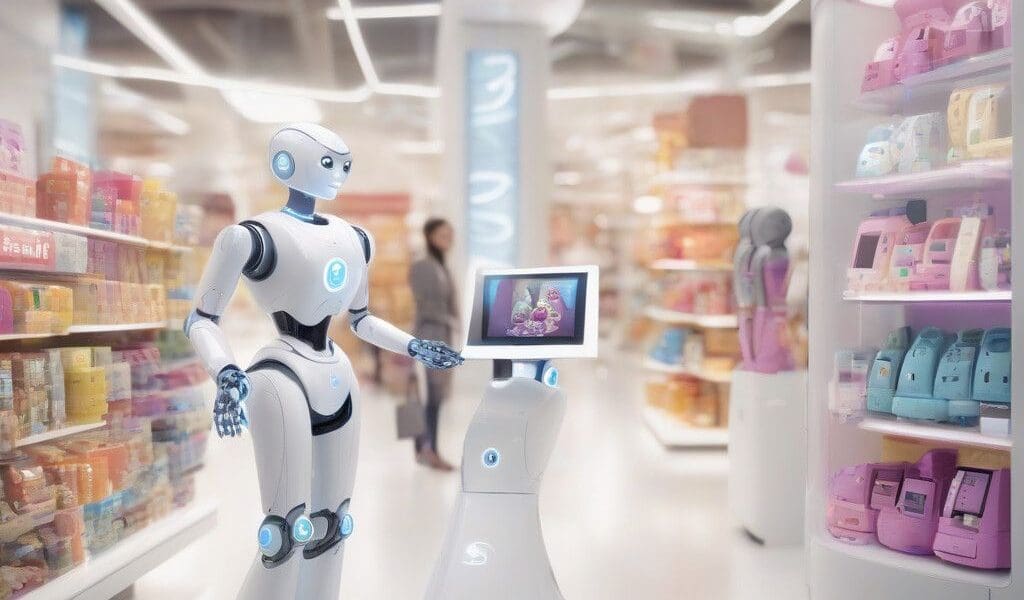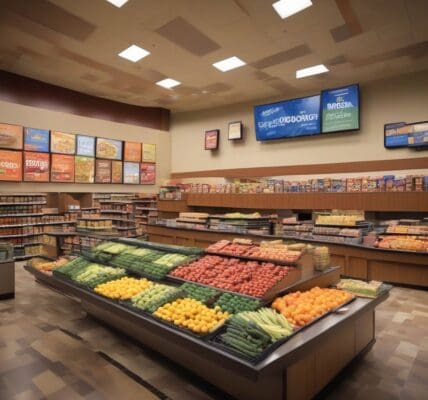In a significant leap forward for the retail industry, Richtech Robotics Inc. has introduced its advanced robotic beverage system, known as ADAM, at a Walmart One Kitchen in Rockford, Illinois. This represents the second installation in a broader initiative to deploy these robots across 240 U.S. locations. To gain insights into the motivations behind deploying humanoid robots in retail and address concerns, Progressive Grocer spoke with Matt Casella, the President of Richtech Robotics.
The Value of Humanoid Robotics
Casella highlighted that the deployment of ADAM is not just about enhancing operational efficiency; it’s about enriching customer experiences. “In environments where customer attraction and foot traffic are crucial, ADAM stands out as a solution that appeals to customers and enhances their shopping journey,” he explained. The integration of robotic systems creates innovative interactions that can lead to both increased customer satisfaction and operational improvements.
A Balanced Approach to Design
One of the key components in the design of ADAM was its intended appeal as a friendly and engaging entity. Casella mentioned that overly humanoid robots might evoke discomfort or anxiety in individuals. Instead, ADAM strikes a balance, incorporating advanced automation technology while being designed to connect emotionally with customers. “We wanted ADAM to be an experience that visitors would remember,” he stated, emphasizing the importance of memorable interactions in the hospitality space.
Facing Fears and Concerns
A commonly raised concern in the introduction of robotics in any sector is the fear of job loss. To mitigate this worry, Casella emphasized that Richtech’s robots are created to work in partnership with employees, not replace them. “Our robots are designed to improve workflows for businesses and employees,” he said. The goal is to relieve staff of mundane, repetitive tasks like cleaning and delivery. This automation creates opportunities for human employees to focus on more intricate and rewarding responsibilities that also generate more revenue.
Innovative Development Process
Richtech Robotics leverages AI technology to optimize their robots’ functionalities and real-world applications. Casella noted that by utilizing NVIDIA Isaac, they can simulate robot operations in various environments, significantly cutting down development time and minimizing trial-and-error costs associated with physical testing. “Our robots adapt based on the analysis of operational workflows in restaurants, hotels, and healthcare facilities,” he added, ensuring they evolve to meet specific needs.
Enhancing Customer Interaction
To improve customer engagement, Richtech is developing an instant voice-chat feature that will allow customers to interact directly with the robots to place orders or receive recommendations. This initiative aims to bridge the gap between technology and customers, making the interactions feel more personable and intuitive.
Expanding the Robotic Ecosystem
While ADAM is gaining attention for its beverage-serving capabilities, Richtech has been busy deploying other robotic solutions as well. The DUST-E S floor-cleaning robot, for example, ensures that store environments maintain high cleanliness standards, directly impacting customer satisfaction. Moreover, their Titan lineup focuses on automating logistics tasks, such as deliveries, further enhancing operational efficiency.
Conclusion
The introduction of humanoid robots like ADAM in retail settings is an exciting development that promises to reshape customer interactions and operational workflows. Richtech Robotics exemplifies a commitment to creating harmonious relationships between humanity and technology. Far from overshadowing human roles, these robots are tailored to enhance the workforce, create memorable customer experiences, and refine operational processes in retail.
As more retail environments adopt these innovations, one can only anticipate the broader implications for the industry, potentially leading to new standards in customer service and operational efficiency.












